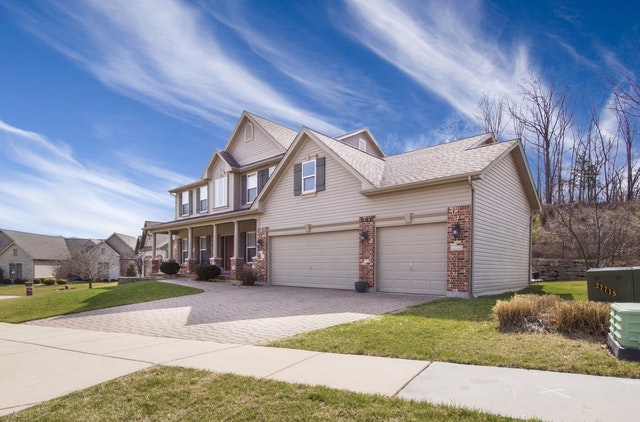 Buying a property out of foreclosure can be a very smart move, financially. But it can also be complicated, expensive, and stressful.
Buying a property out of foreclosure can be a very smart move, financially. But it can also be complicated, expensive, and stressful.
Here are 5 things to keep in mind before you take a first step in that direction:
Cash Or Preapproval Required
Buying a house that has been returned to the lender through foreclosure means dealing with bureaucracy rather than with a motivated seller. Large lenders are notorious for taking their time to approve a contract, even if the offer is for the exact amount specified.
Then there’s the paperwork, which can seem endless. Most lenders require that prospective buyers have cash on hand, or a pre-authorized loan in place in order to even submit an offer.
There’s Little Room For Negotiation
Although in certain circumstances there may be an opportunity for some discussion about the price, that is not the norm in a foreclosure. The minimum price is usually written in stone, even during an on-site property auction, and the only direction is up! The days of buying foreclosures for a song are long past, if indeed they ever really existed.
As-Is Condition Means Just That
Some buyers specialize in foreclosures while other investors run the other direction. There are pros and cons, of course, to every transaction. Sage advice is to always pay the fee for a property inspection on a foreclosed property, even if you have experience. A third-party evaluation is especially valuable if the home has been vacant for an extended period of time, if the utilities have been turned off, or if there are extensive visible defects.
Foreclosures can be like icebergs: What you see may be nothing compared to what lies below the surface. Also, with the findings in writing, always confirm that your loan commitment and insurance quotes will be honored in spite of the existing condition.
The Need For An Experienced REALTOR
Navigating the landscape of property foreclosures is a specialty field, and caution is the name of the game. As a prospective buyer of a pre-foreclosure, a short-sale or a foreclosed home, an experienced REALTOR is your best resource. A real estate professional will help you deal with all timelines and requirements, and has the knowledge and expertise to recommend lenders, inspectors, insurance agents and contractors to help you make a decision.
Always Consider Future Value
Although the initial price might be right, there are additional variables at play in every real estate transaction. What can you expect in terms of appreciation over the short term? What is the long-term outlook for the neighborhood? Will needed repairs and improvements add to the home’s value, or simply bring its condition up to standard? Do you plan to live in the home, or is it strictly for resale?
Your trusted real estate professional is the best resource to help you thoroughly evaluate all the information about every foreclosure.
 While a kitchen herb garden or pot-grown tomatoes may be commonplace in both suburban backyards and on urban condo patios, an increasingly large number of homeowners look to backyard farming as a way to relieve some of the stresses of modern life. Other benefits include cutting grocery bills, living a more sustainable life, and teaching children about food.
While a kitchen herb garden or pot-grown tomatoes may be commonplace in both suburban backyards and on urban condo patios, an increasingly large number of homeowners look to backyard farming as a way to relieve some of the stresses of modern life. Other benefits include cutting grocery bills, living a more sustainable life, and teaching children about food. Is it worth it to add smart appliances or automated features if you’re selling a home? Just how much connectivity do buyers want? And what exactly do the terms refer to in terms of home updates.
Is it worth it to add smart appliances or automated features if you’re selling a home? Just how much connectivity do buyers want? And what exactly do the terms refer to in terms of home updates. Multi-generational households and the growing preference on the part of many retirees toward “aging in place”have altered home design in recent years. Interiors are more open, more functional and more adaptable that they were even a decade ago. Spaces tend to be less formal; living space is better integrated with work space like the kitchen, and rooms tend to serve more than once purpose, both for quiet pursuits and for family gatherings.
Multi-generational households and the growing preference on the part of many retirees toward “aging in place”have altered home design in recent years. Interiors are more open, more functional and more adaptable that they were even a decade ago. Spaces tend to be less formal; living space is better integrated with work space like the kitchen, and rooms tend to serve more than once purpose, both for quiet pursuits and for family gatherings. This summer, quality homes are being scooped up almost as fast as they’re being listed – and for top price. Yes, it’s a seller’s market out there, which is great news if you’re planning to list your home. For those looking for a home, the competitiveness can be frustrating and aggravating.
This summer, quality homes are being scooped up almost as fast as they’re being listed – and for top price. Yes, it’s a seller’s market out there, which is great news if you’re planning to list your home. For those looking for a home, the competitiveness can be frustrating and aggravating. Rules and covenants of a homeowners association can be a bit overwhelming, especially for a first time homeowner. Understanding that the regulations are designed to protect the value of your home helps make some restrictions easier to live with.
Rules and covenants of a homeowners association can be a bit overwhelming, especially for a first time homeowner. Understanding that the regulations are designed to protect the value of your home helps make some restrictions easier to live with.